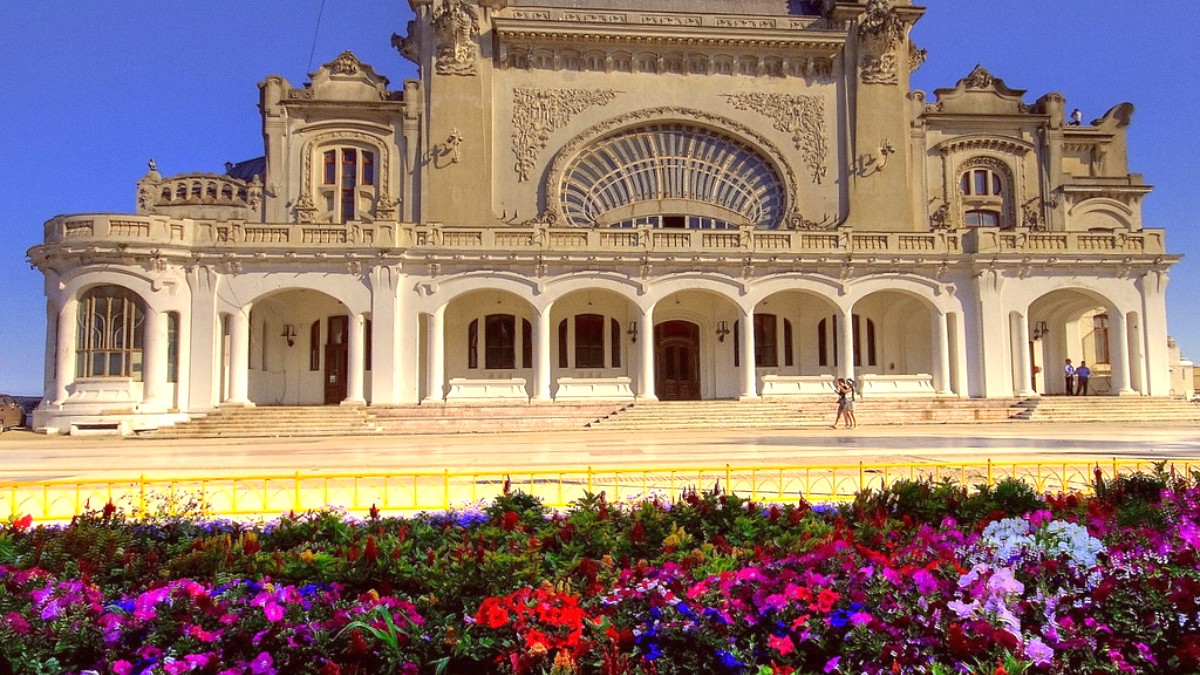
Northern Dobrogea, Romania
Visitors discover a destination where Roman ruins stand alongside Ottoman mosques and Art Nouveau architecture, all set against the backdrop of the sea. Constanțan is a destination with unique character, inviting travelers to explore its layers of heritage and enjoy its coastal atmosphere.
Constanțan is a distinct position in southeastern Romania. It sits in the historical region of Northern Dobrogea, a territory defined by the Danube River to the north and west, and the Black Sea to the east. The city itself sprawls across the western coast of the Black Sea, making it Romania's main maritime gateway. This coastal location forms Constanța's identity as a major commercial hub and popular tourist spot.
The city is built on low hills and plains, sloping gently towards the Black Sea. To the east, its urban landscape meets the sea, while to the north, it borders Lake Tăbăcărie. This lake offers a contrast to the bustling port, providing green spaces and recreational areas. The coordinates place it at approximately 44.18° N latitude and 28.63° E longitude. This position means it experiences a temperate-continental climate, modified by its proximity to the large body of water.
Constanța's history stretches back over two and a half millennia, making it one of Romania's oldest continuously inhabited cities. Its origins trace to around 600 BC when Greek colonists from Miletus founded the settlement, naming it Tomis. This Greek presence established Tomis as a thriving port and trade center on the Black Sea, connecting the Greek world with local Dacian tribes.
The city gained renown in 8 AD when the Roman poet Ovid was exiled here by Emperor Augustus. Ovid spent his final years in Tomis, writing mournful verses about his banishment and documenting the region and its people. His presence solidified Tomis's place in classical literature and history. Later, the city became an integral part of the Roman Empire, and following its division, it fell under the Byzantine Empire. The 14th century marked a shift as Tomis, known as Constanța, came under Ottoman rule. This period lasted nearly five centuries, leaving a lasting mark on the city's culture, architecture, and demographics. The Ottoman influence introduced a strong Turkish and Tatar presence, shaping culinary traditions and religious landscape, visible today in the city's mosques.
Colonists from Miletus established Tomis, a trade port on the Black Sea.
Roman poet Ovid spent his final years here, documenting the region.
Tomis became integral to the Roman Empire and later the Byzantine Empire.
Nearly five centuries of Ottoman rule left a strong cultural and architectural mark.
Constanța joined independent Romania, leading to rapid modernization and port expansion.
In 1878, after the Russo-Turkish War, Constanța was incorporated into the newly independent Romania. This marked a period of rapid modernization and development. The port underwent substantial expansion, becoming Romania's main maritime outlet and a valuable point for international trade. This era brought new architectural styles, including prominent Art Nouveau structures, and a renewed sense of national identity.
Explore ancient Roman ruins, Ottoman mosques, and Art Nouveau architecture throughout the city.
Enjoy scenic Black Sea views, sandy beaches, and a maritime atmosphere.
Constanța’s rich multicultural heritage, shaped by Greeks, Romans, Byzantines, Ottomans, Tatars, and Romanians, continues to define its unique character, presenting visitors a complex historical narrative at every turn.
Constanța presents a dynamic view of Romania's Black Sea coast. Visitors discover a city where ancient civilizations meet modern life. Walk the Old Town streets, and Roman mosaics and Ottoman minarets appear. Step onto the promenade, and the vast Black Sea stretches before you, adorned by the iconic Art Nouveau Casino building. The city functions as Romania’s largest port, a hub of commerce and activity. Just north lies Mamaia, a popular resort known for its sandy beaches and lively summer atmosphere.
The blend of cultures forms the cuisine, architecture, and local traditions. Discover a place that embraces its past while looking towards the future, making it a compelling stop for any traveler seeking history, relaxation, and the unexpected. Constanțan offers a travel experience that appeals to those interested in archaeological sites, maritime culture, and seaside leisure.
Explore ancient ruins and diverse architectural styles.
Enjoy seaside activities and port life.
Admire the famous Art Nouveau building on the promenade.
Constanța forms a compelling stop for any traveler seeking history, relaxation, and a touch of the unexpected.